For your firearms to function as they should, they must be cleaned and maintained appropriately. This means that you have to take the time to regularly and thoroughly clean your firearms.
The problem is that sometimes cleaning kits can be expensive, and while it is nice to have a commercially available kit for cleaning firearms at home, you may not want to lug around such a kit through the woods or in a bug-out bag.
Fortunately, it is possible to build a functional kit with items you may have lying around the house and garage.
An Ounce of Prevention
Regular cleaning and oiling of your firearms will mean that when they get dirty out in the field, they will not be so soiled that they need a large-scale deep clean.
If you started the day with a clean weapon, all you need to do is give it a good once over with a rag and some oil, pulling a patch or two through the barrel to have a weapon that will continue functioning properly.
Related: The Complete Guide To Cleaning And Lubricating Your Ar-15
Pouch
You’ll need something to hold all of your cleaning supplies in, and choosing a pouch is the first step in building your kit.
Whatever you decide to choose needs to be large enough to fit all the items but small enough that you will not find it cumbersome to carry around in your kit.
Selecting a MOLLE pouch will give you the added advantage of attaching it to a plate carrier or battle belt.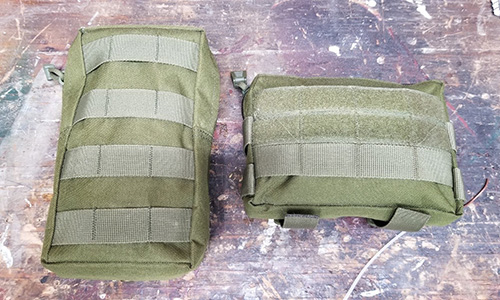
Gun Oil
Oil designed for use on firearms is the best choice for your kit, but there are alternatives that you could consider when improvising a gun cleaning kit.
Most oils and lubricants used on machinery will also be effective for use on your firearms.
Products like 3 in 1 oil or even 5w30 motor oils are going to do the job of lubricating and protecting your guns. Avoid using any plant-based oils such as canola and olive oils.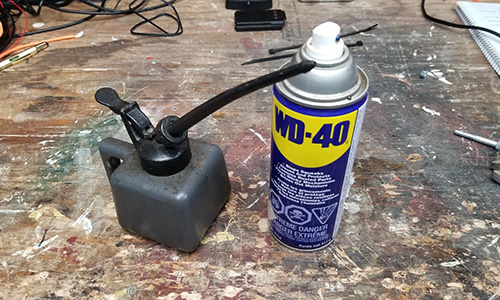
Cotton Patches
Pulling a patch through the barrel and removing any carbon build-up is essential in gun cleaning.
While you can buy patches, it is also easy to make your own out of old t-shirts. When cutting up cotton t-shirts, make sure that the patch’s dimensions are appropriate for the type and calibre of the firearm and that the material is not too thick.
Related: How Shooters Are Building Firearms with 80% Receiver Kits
Different shirts can be of different thicknesses. If you cut patches of the same size out of shirts of different thicknesses, you may find that one of them may fit significantly tighter than the other. This could lead to a patch getting jammed in the barrel.
Test out your patches at home before putting in any kit that you take to the field.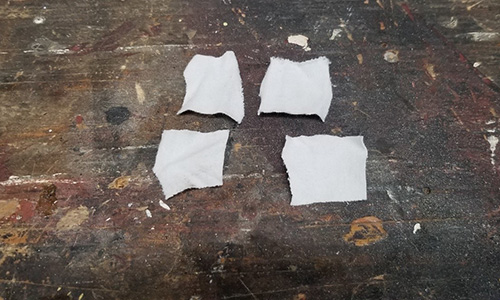
Rag
You can cut a rag out of an old shirt or use a soft microfibre cloth; it simply needs to be large enough to be used to wipe down the exterior of the gun of dirt and debris.
Lint-free rags are always best, but any cotton or microfibre fabric will suffice.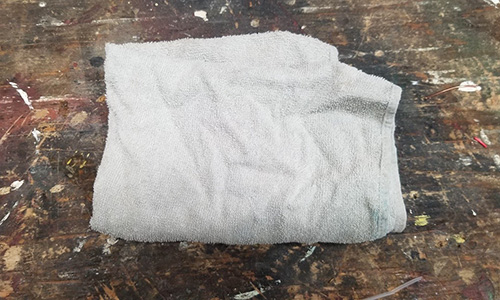
Toothbrush
While you could use an old toothbrush for scrubbing your firearms, they are not expensive, and it is probably best to go out and get the stiffest bristled toothbrush that you can buy.
If you want, you could also get a soft bristle brush and glue or tape them together to give yourself more options.
Dollar stores often have small travel-sized toothbrushes that will do the job quite nicely.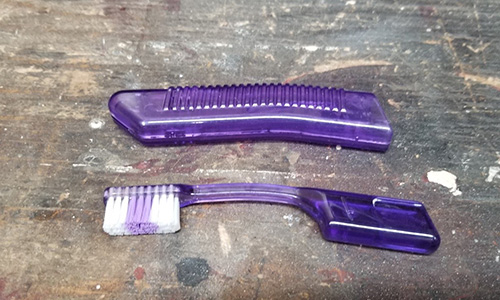
Paracord Bore Snake
Improvising a bore cleaning rod is not very practical, so instead, consider making a bore snake out of paracord or another cordage.
The type of cordage you use will be determined by the weapon you are building it for.
Related: Making Cordage From A Plastic Bottle
At one end of the cord needs to be a loop that you can slip a cotton patch through and drag it through the barrel. Again test this out at home before putting this into your kit.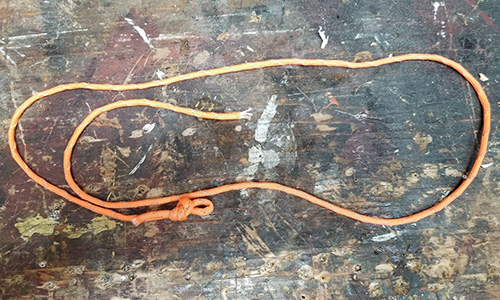
Q-Tips
When I was a young soldier, Q-Tips were practically worth their weight in gold when it came to cleaning our weapons. These can get down into all of the nooks and crannies of the weapon.
If you think you have put enough Q-Tips in your kit, add a few more because my experience always was that I often needed one more Q-Tip when digging carbon out of my C7 assault rifle’s lower receiver.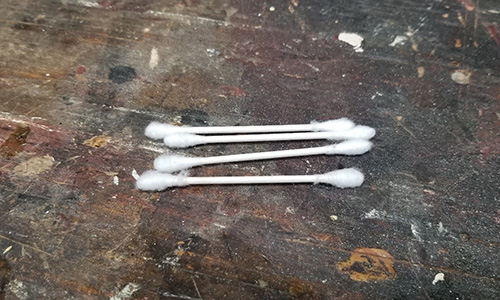
Lens Cloth
The chances are that if you have firearms, there are optics attached to them.
A lens cloth that you would commonly find included with cheap reading glasses is more than sufficient to wipe dirt and debris off the lens of your optics.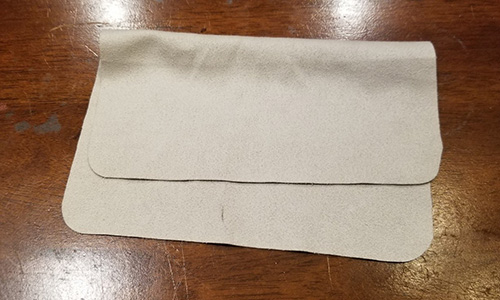
Flashlight
A simple AAA battery penlight is all you need to get a closer look at how clean your weapon is. This is also good for lighting up the gun’s bore to get a really good look at the condition that it is in.
A flashlight is also useful for locating that extractor spring that slipped between your fingers.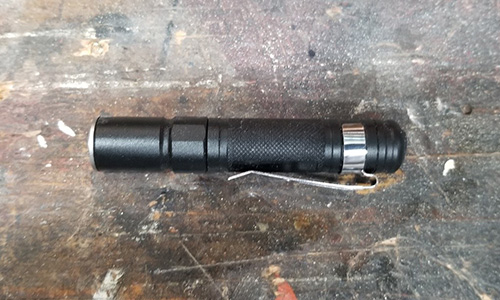
Spare Batteries
Modern weapons often have battery-operated accessories. From rangefinding optics to flashlights, if your firearms have battery-operated accessories, you need to include a spare battery for them.
Related: Rescuing And Restoring Almost Dead Lead-Acid Batteries
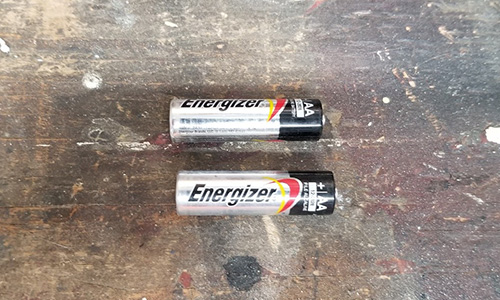
Multi-Tool
You probably already carry a multi-tool in your gear, but it is nice to have a spare one in your cleaning kit.
If you have an extra multi-tool lying around, consider throwing it into your gun cleaning kit as long as it has the appropriate tools to make adjustments to your firearms.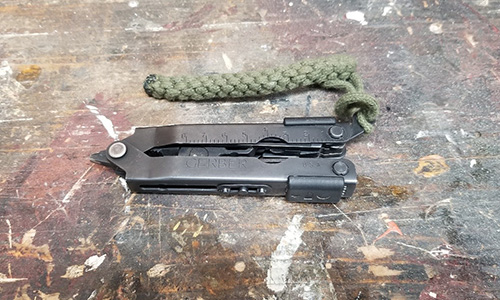
Nitrile Gloves
Wear gloves when cleaning your firearms. The ability to quickly clean your weapon and pull off your gloves to have clean hands will be a serious timesaver during a bug-out scenario.
Also, not having to wash your hands of layers of grime, carbon, and oil with your valuable water is very important in a survival situation.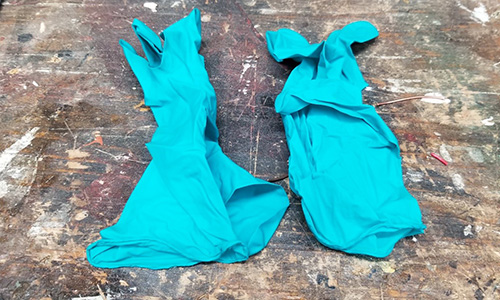
Concluding Thoughts
Many of you carry firearms for the sole purpose of protecting your life and the lives of others. Failing to care for and maintain these weapons properly can lead to them malfunctioning when they are needed most.
As I have detailed here, you can build a kit quite easily for not a lot of expense which is almost as effective as a commercially produced cleaning kit.
You can make a number of these cleaning kits and keep one in each of your emergency kits and bags so that there will always be the ability to keep your firearm in tip-top condition no matter the situation.
You may also like:
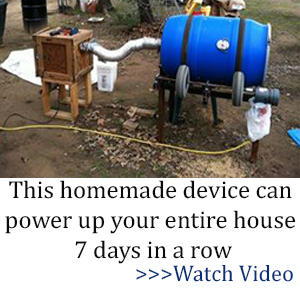 5 Best Guns to Have Against Looting Rioters
5 Best Guns to Have Against Looting Rioters
The Awesome DIY Device That Turns Air Into Fresh Water! (Video)
How To Reinforce a Shipping Container To Bury It (EMP proof)
I Lived In A Post-SHTF World For 3 Years, And This Is What I Learned

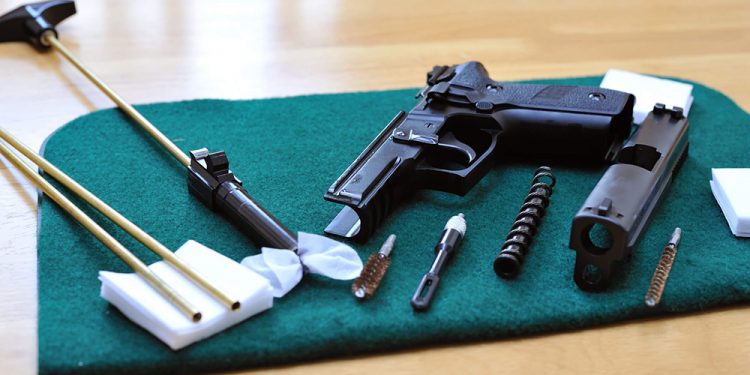













Good advice, always. I wonder how many have killed themselves by not properly cleaning a weapon. Dad believed it should be an instinct to check a gun daily, and always clean it after using. niio
every day, empty gun, dry fire 5-10 times, reload, press check, holster…
Red: I don’t think many self-inflicted fatalities are as a result of a poorly maintained firearm. Mostly what happens with a poorly maintained firearm is that it just fails to function. If you are in a firefight, that may prove deadly but it isn’t from the dirty firearm. It is hostile action by someone who wants to kill you while you have deprived yourself of the ability to protect yourself.
A bullet jammed in the bore is rarely — I want to say never, but that is too all exclusive —the result of a dirty bore. A dirty bore will cause your firearm to skew the bullet. It may cause the bullet to exit with less than ideal muzzle velocity. Most of the effects from a dirty bore have to do with what happens to the bullet after it leaves the muzzle. Dirty bore does not include a bore obstructed by careless handling of the firearm, plugged with mud, sand, sometimes ice.
I recently removed a firearm from storage and when I thought about it, it had been at least 40 years since I had last handled that safe queen. Naturally I examined the bore to insure than nothing had taken up residence in the bore that would affect the passage of the bullet down the length of the barrel. The barrel was as pristine as the day I put it away. I did have a lot of trouble operating the action, however, as the lubricant I had used, over the intervening decades had congealed and made operation of the action quite stiff. So, if your self-defense firearm has been sitting undisturbed in the nightstand drawer since before your college age daughter was born, it might be a good time to check it out to see if it still functions. You don’t want to find out that it won’t function when three bad guys are breaking down your front door at oh dark thirty.
Most bullets jammed in the bore are due to faulty ammunition, No powder, just a primer is a major cause of squib loads. Old, deteriorated ammunition is another cause of squib loads. Those steel cased 9 mm rounds with Cyrillic writing in the headstamp may just go “Poof” when the hammer falls. That’s a good time to check the barrel to see if it is obstructed.
Wrong powder and double loads are frequent causes of firearms coming apart upon ignition. It is loading a .30-06 with 58 grains of Unique when you thought you were using 3031. It is jamming a .270 in a .30-06 chamber and firing the cartridge. Or a .308 in a .30-06 chamber will sometimes give interesting results. Back when I was young, long, long ago, 20 ga shells were not all yellow. They frequently were the same color as 12 and 16 ga. It was not that unusual for a hunter in the excitement of the hunt to shove a smaller shell into his 12 ga. single shot, break action H&R with interesting results. That’s the primary reason 20 ga. these days are all loaded in yellow cases.
Some years ago there was an interesting article in American Rifleman magazine about an Arisaka that had been brought to their attention. A shade tree gunsmith has rechambered the Arisaka to .30-06. Upon firing the weapon he noticed a very significant increase in perceived recoil.
He took the rifle to a real gunsmith who was astounded that the Arisaka had not blown up in his face. Forcing a .30 caliber bullet down a .256 caliber barrel is a good recipe for significant pieces of flying metal.
The rifle was sent to NRA for an article in American Rifleman about the advisability of also reaming out the bore when switching to a larger caliber, something our shade tree gunsmith had overlooked.
The technical writers for American Rifleman conducted a similar test of the rifle in question, however with a few differences, one being behind a significant barrier while testing the rifle. It again did not blow up. Not wishing to press their luck, they returned it with the advice to have the barrel reamed to a more suitable diameter.
best cleaning kit ever is the original military cleaning kit that fit in the buttstock of a M16…not that copper bendy shit they sell at all the stores, not the knock off military kits…the real deal cleaning kit…throw in a small bottle of breakfree, couple metal dental picks and q-tips and you can clean anything…if you don’t want to add dental picks, take an old coat hanger, the good metal kind, cut off 2-3 inch section, pound one end flat and can use that as a scraper…
…. And in case of a dire emergency. One section of that cleaning kits rod could be fired with a blank round.
Best toothbrush to buy for cleaning in the tight places in one used for dentures. They are usually pyramid shaped, have stiff bristles and are only about 4 1/2″ long.
Terry: Thanks for the tip. I would have never thought about denture cleaning brushes. What I have been buying is special gun cleaning brushes that look like a funky toothbrush. It is a double ended toothbrush with one end being smaller than the other. You wouldn’t want to use it on your teeth as the bristles are quite stiff. I think it would tear one’s gums up. Most of the time I buy them at a gun show but lots of mail order supply houses carry them.
A simple bore snake and some clp. That will cover 99 percent of everything.
I still can’t figure out how to make a gun with these items?
The shared responsibility of the community involves protecting their homes and managing challenges like time constraints and a shortage of essential tools. Additionally, tasks such as cleaning roofs or gutters present potential risks, making the situation more intricate. You can see more here. House Washing Perth effectively addresses these challenges with a committed team of outdoor house cleaners devoted to refreshing homes of different sizes. Our carefully tailored house washing services in South-Western WA are formulated to ensure customer satisfaction, underscoring our unwavering commitment.